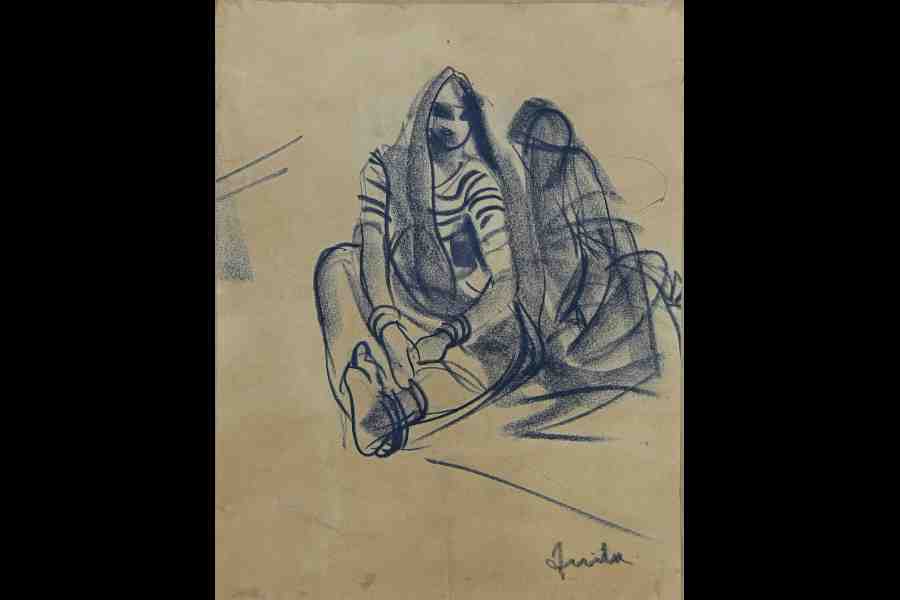Two artists from two different countries took two different approaches to paring down their artworks to distil the essence of the image they were trying to portray (Through the Circle at Gallery Charubasona). Tapas Konar from India chips away at form and figuration to conjure up insects and birds that resemble origami creatures. Shine Misako from Japan is of the opinion that colours often interfere with capturing the true essence of an object and thus plays with sumi ink to great effect (picture, down). Both artists succeed in their objectives but Misako’s fluid washes, large canvases and brilliantly detailed portraits of the natural world were more striking. But Konar must be credited for making viewers ponder the irrationality that is such a big part of our existence.

An artwork by Shine Misako
Chitralekha Little Museum presented a quaint show at Debovasha recently titled Women. Showcasing the works of nine artists, the show exhibited pieces that many would perhaps be familiar with. But seen together, these pieces etched out a poignant and intimate portrait of Bengali women through the ages. Haren Das’s mezzotint
of two women at a window was as mesmerising in its shading as it was touching in showing the interiority of women’s lives (picture, bottom left).

HD 02. Haren Das. Window. Mezzotint. Edition 11 out of 15. 9.7 x 13.5 Inches. 1973 Source: Debovasha
Anita Roy Chowdhury’s sketches captured the female body both indoors and outdoors (picture, bottom right) and Reba Hore’s burst of colours captured the storms that rage within women even when they look completely calm on the outside.

ARC002 Anita Roy Chowdhury. Charcoal on paper. SIZE11.5 15 INCH Source Debovasha
Lalu Prasad Shaw and Jogen Chowdhury’s women illuminate the female form in different ways and show the various social relationships within the observed world that shape women’s identities. Ramananda Bandopadhyay’s women whiling away their time have little to do with contemporary realities, whereas Ganesh Haloi’s little girl staring boldly back at the viewer seems all too real. Sanat Kar imagines the feminine as the divine while Somnath Hore’s Picasso-esque sketch of a woman is reflective.

![An artwork by Shine Misako [the artist]](https://assets.telegraphindia.com/telegraph/2024/Dec/1735352757_new-project-2024-12-28t070431-473.jpg)








